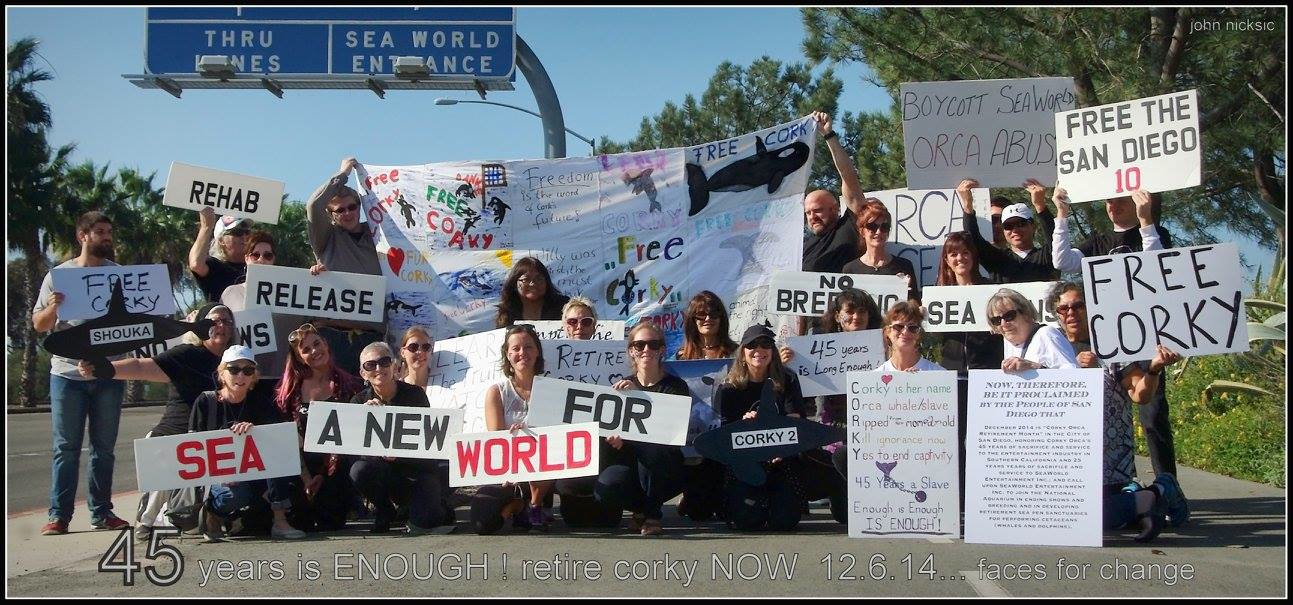The Latest News on Corky - December 2014
Corky’s Saddest DayIn a few short hours from now, we will mark the 45th anniversary of Corky’s capture. Incredible. Incredible to think she has survived for so long, creating a new record for captive orca longevity with each breath; incredible to contemplate the strength of will and character that has enabled Corky to withstand the stress of being surrounded by concrete walls all this time – walls that deprive her of the sounds of her family and the comfort of the ocean she was born into; and incredible to realise that she still has a chance to return to the ocean and hear those sounds once again. This past year has seen a resurgence of energy directed towards giving Corky a chance to “retire” to an ocean sanctuary, where she would continue to be cared for by humans and also be able to meet and interact with her kin and community. The location is Blackfish Sound in British Columbia, Canada. Corky’s family visits regularly each summer, and even occasionally during the winter. It’s a place where SeaWorld can establish a facility to care for Corky, bringing staff who know her well, and incorporating a live video/audio link to their home base in San Diego. Though still confined in her new home, Corky could meet her kin again. It would require SeaWorld to “come clean” about who Corky is and where she comes from, that she has family, even a brother and sister though she has never met them, and become involved in the future of the marine park industry. That future does not include performing prisoners. SeaWorld is now a publicly traded company. Following the release of the documentary film Blackfish SeaWorld’s stock has fallen precipitously, and attendance at its “parks” has declined significantly. SeaWorld holds on to the belief that all it needs to do is improve the size of its tanks and all will be well for their bottom line and investors. It’s a vain hope. Understanding of cetaceans now includes the concept that they are sentient beings, deserving of fair treatment not slavery, and the “non-human rights” movement is gathering steam. Projecting not so far into the future, a day will come when it is widely recognised that harm has been perpetuated on innocent victims, and amends must be made. Orcas have the second largest brain on our planet. They live in complex non-violent societies that have evolved over time we cannot imagine. They deserve the right to be free of human interference. As a society, we are beginning to grapple with some of their needs and our responsibilities. In Canada, the federal government created the Species at Risk Act (SARA) to establish a framework for dealing with the needs of species besides ourselves. It’s a profound concept. For orcas, who are officially recognised as endangered or threatened in both Canada and the U.S.A., much needs to be done, and some changes such as protecting their food supply and their acoustic environment will be difficult to accept. But change is coming. The only question is how long it will take, and whether it will be in time to head off disaster. SeaWorld could be a part of the solution. In becoming so, it could save itself. Many things that happened this past year give us hope. Corky’s great Freedom Banner has been on the move again, thanks to Christine Pasos, a Seattle teacher who devoted her summer to Corky; and in San Diego a citizens’ group has formed that is bringing Corky into the public mind again. It has launched a petition asking San Diego’s City Council to declare December Corky Orca Retirement Month. Please sign it and pass it on: Protest Link: Declare December Corky retirement Month |

